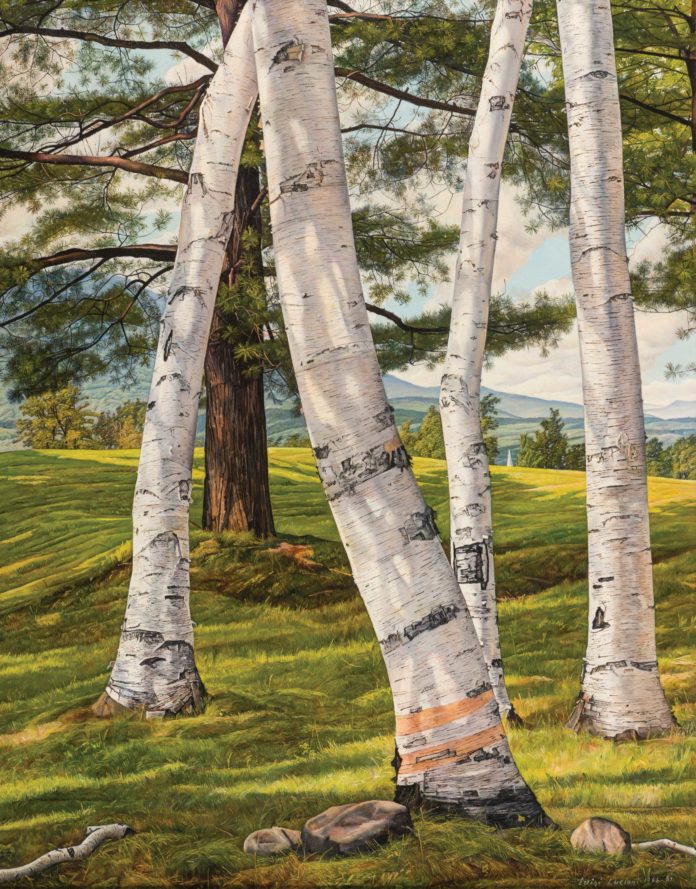
ON VIEW > Luigi Lucioni: Modern Light
Shelburne Museum, Vermont
shelburnemuseum.org
through October 16, 2022
The Shelburne Museum should be proud to have organized the first major exhibition devoted to a remarkable realist master, “Luigi Lucioni: Modern Light.”
It highlights this relatively overlooked American artist (1900–1988), born to a working-class family in northern Italy. When he was 10, they immigrated to New York City, and he proceeded to study fine art at Cooper Union and the National Academy of Design, even traveling back to Europe to sketch from Renaissance masterworks.
Lucioni presented his first solo exhibi-tion in 1927, and three years later he began visiting Shelburne, Vermont, where the millionaire collector of folk and fine art Electra Havemeyer Webb (1888–1960) became one of his key patrons. (She proceeded to establish the Shelburne Museum there in 1947.)
By 1937, Life magazine had hailed Lucioni as Vermont’s “Painter Laureate” by virtue of his many paintings of the Green Mountain State’s landscapes and towns. He generally spent his winters in Manhattan and summers teaching at the Southern Vermont Arts Center.
On view this season are more than 50 Lucioni works borrowed from collections nationwide, including Shelburne’s own extensive holdings. He made superb still lifes and portraits, but remains best known for paintings and etchings of Vermont landscapes, ranging from verdant valleys and stately trees to hardscrabble mining sites.
The exhibition will explore Lucioni’s unique role in the genre that art historian Bruce Robertson has called “Yankee Modernism.”
Alongside such colleagues as Paul Sample, Maxfield Parrish, Charles Sheeler, and Andrew Wyeth, Lucioni depicted a landscape and a people — orderly yet odd — who embodied an idealized set of “American” values in their era of social and political change.
Also under review are his materials and techniques, his relationship with the New York avant-garde, and his identity as both an immigrant and a gay man.
The accompanying catalogue, published by Rizzoli-Electa, is sure to be the definitive statement on Lucioni for years to come.
> Visit EricRhoads.com to learn about more opportunities for artists and art collectors, including retreats, international art trips, art conventions, and more.
> Sign up to receive Fine Art Today, our free weekly e-newsletter
> Subscribe to Fine Art Connoisseur magazine, so you never miss an issue






